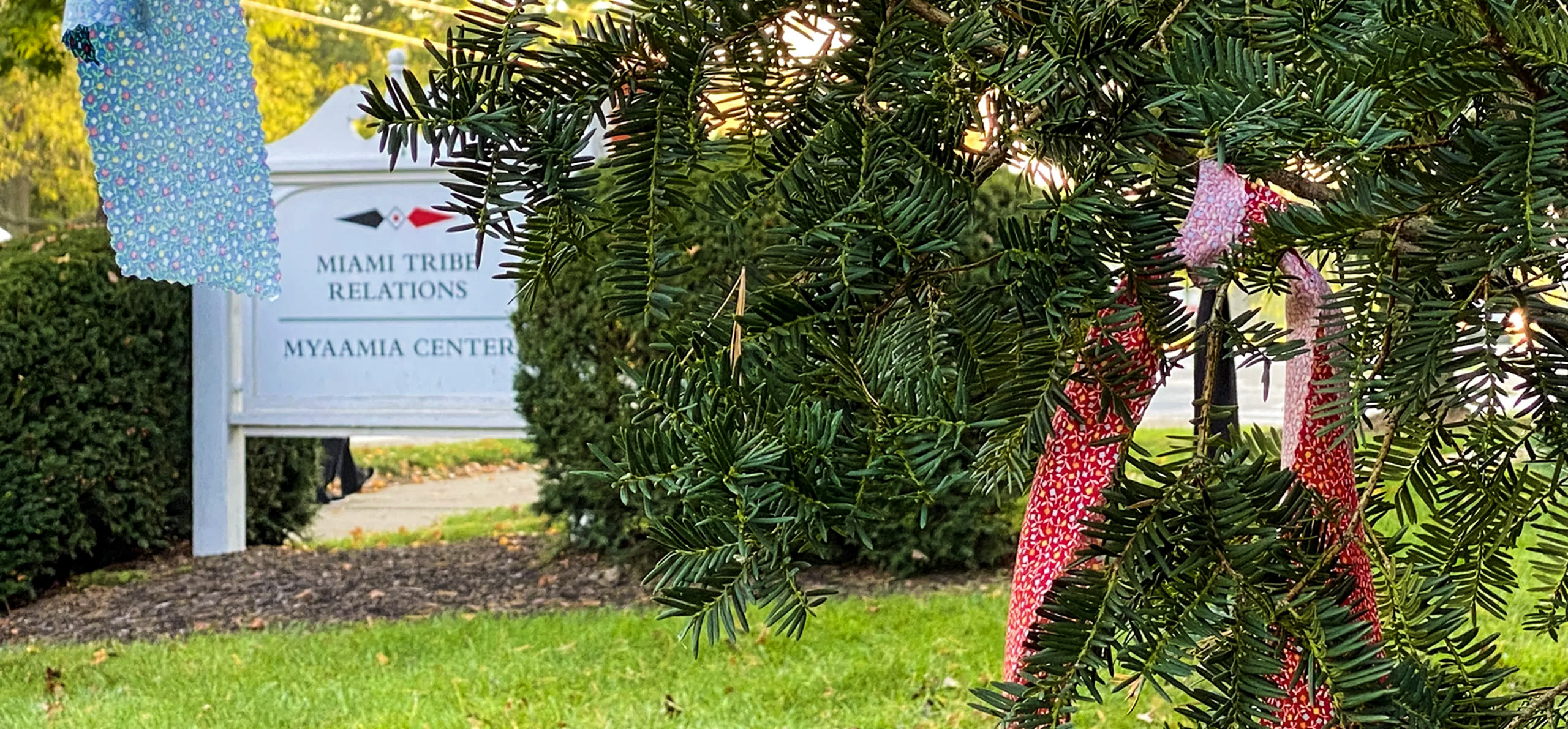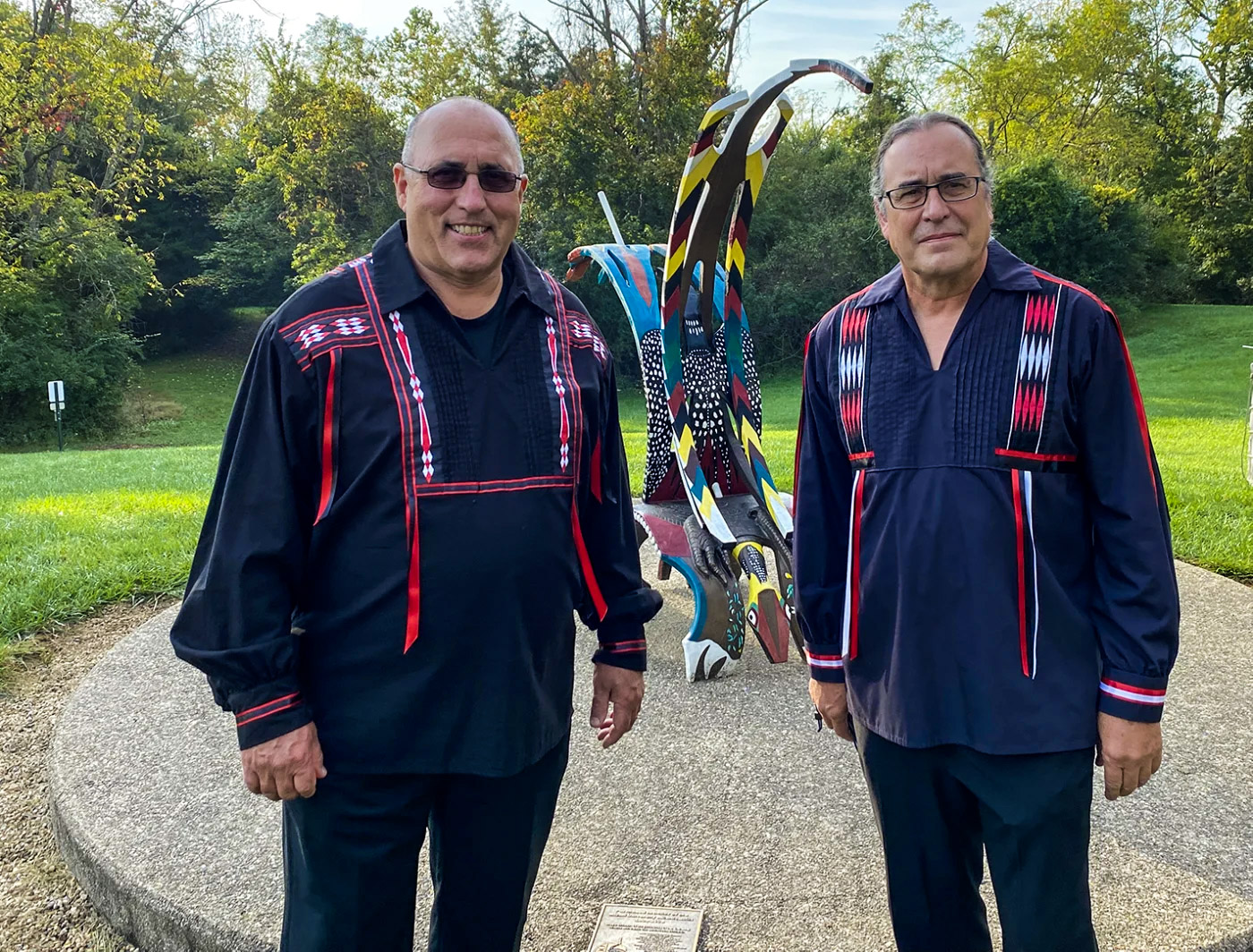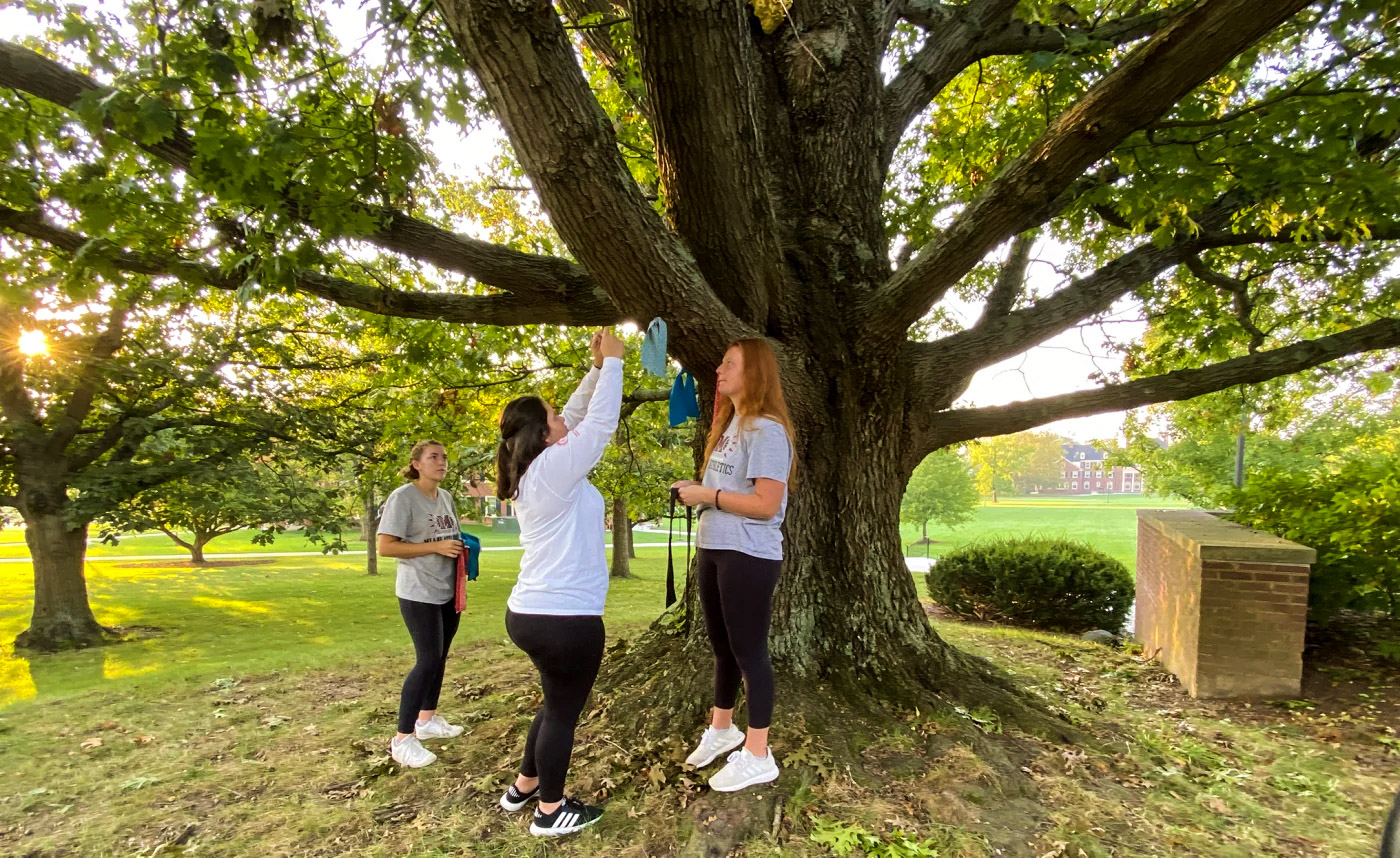Indianz.Com > News > Indian Country Today: Miami Nation returns to homelands on Indigenous Peoples Day

Myaamia tribe commemorates forced removal 175 years ago
Tribe now partners with Miami University in language, culture revitalization
Tuesday, October 19, 2021
Indian Country Today
Indigenous Peoples Day on October 11 also marked the day 175 years ago when Myaamia tribal citizens were forcibly removed from their homelands near the campus of Miami University in Oxford, Ohio.
Myaamia tribal leaders, citizens and Miami University officials and students gathered to commemorate that fateful day when it seemed everything Myaamia was lost. Their collective mourning, however, was lightened by recognition of the remarkable partnership between the tribe and university that helped restore the lost Myaamia language and culture, offering healing and reclamation of pride in being Myaamia.
Recipients of the Miami Heritage Award Program hung 330 strips of cloth on trees throughout campus, one for every tribal citizen who was removed from their homelands in 1846, 16 years after President Andrew Jackson signed the Indian Removal Act of 1830.
Today, 39 Myaamia students attend the university with a fee waiver as part of the Heritage Award.


Jett encouraged students and staff to read the acknowledgement at all university events. “It is our responsibility as learners,” she said, “to educate ourselves about this history and show respect and reverence for this land.”On October 11, Miami University commemorated the 175th anniversary of the Myaamia Forced Removal. 1/3 pic.twitter.com/egBkih2KRE
— Myaamia Center (@MyaamiaCenter) October 13, 2021
Mary Annette Pember, a citizen of the Red Cliff Ojibwe tribe, is a national correspondent for Indian Country Today.
This article originally appeared on Indian Country Today, an an independent news enterprise owned by IndiJ Public Media, an Arizona nonprofit company that sustains itself with funding from members, donors, foundations, and supporters. ICT does not charge for subscriptions and tribal media (or any media, for that matter) can use the publication’s content for free. Contribute to Indian Country Today.
Search
Filed Under
Tags
More Headlines
Native America Calling: A sample of Native Guitars Tour 2024
Native America Calling: How Native literature is changing the mainstream narrative
Native America Calling: No ordinary animal
Native America Calling: Safeguards on Artificial Intelligence
NAFOA: 5 Things You Need to Know this Week
Chuck Hoskin: Cherokee Nation takes the lead for our environment
Native America Calling: Earth Day assessment for Native peoples
Cronkite News: Gathering addresses ‘epidemic’ among Native people
VIDEO: Cody Desautel on tribes and federal forest management
AUDIO: Legislative Hearing on Discussion Draft of Forest Management Bill
Native America Calling: Remembering the 1974 Navajo border town murders
Native America Calling: Can the right approach close the Native immunization gap?
Cronkite News: Long COVID cases remain high in Arizona
Native America Calling: Eyes in the sky for development, public safety, and recreation
Native America Calling: Three new films offer diverse views of Native life
More Headlines
Native America Calling: How Native literature is changing the mainstream narrative
Native America Calling: No ordinary animal
Native America Calling: Safeguards on Artificial Intelligence
NAFOA: 5 Things You Need to Know this Week
Chuck Hoskin: Cherokee Nation takes the lead for our environment
Native America Calling: Earth Day assessment for Native peoples
Cronkite News: Gathering addresses ‘epidemic’ among Native people
VIDEO: Cody Desautel on tribes and federal forest management
AUDIO: Legislative Hearing on Discussion Draft of Forest Management Bill
Native America Calling: Remembering the 1974 Navajo border town murders
Native America Calling: Can the right approach close the Native immunization gap?
Cronkite News: Long COVID cases remain high in Arizona
Native America Calling: Eyes in the sky for development, public safety, and recreation
Native America Calling: Three new films offer diverse views of Native life
More Headlines